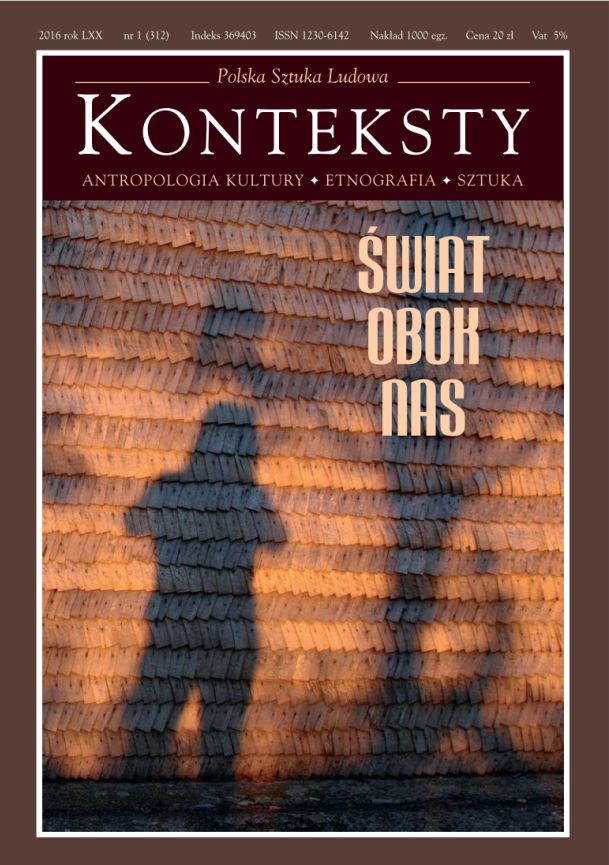Nieobecna obecność. „Świat obok” – w poszukiwaniu paradygmatu hermeneutycznego o nowej funkcji znaku
“Absent Presence” – In Search for a Hermeneutic Paradigm on the New Function of a Sign
Author(s): Michał KlingerSubject(s): History, Anthropology, Philosophy, Social Sciences, Language and Literature Studies, Studies of Literature
Published by: Instytut Sztuki Polskiej Akademii Nauk
Keywords: anthropology; philosophy; hermeneutic
Summary/Abstract: The “next to world” is portrayed as an interpretation formula and a missing segment in the field of discovering textual meanings. It depicts a presence of sorts to which the text refers, but which does not occur in it directly, i.e. as in a film shot (the interpretation data of the text should, however, indicate the methodologically objective presence of the “next to world” in it). It offers signs and leaves traces in the text. The “Sign” is put forward as the terminus technicus of the phenomenon in question, but only as a “Sign” freed from semantic arbitrariness and designation function (e.g. the ”golden horn” in Wesele /The Wedding/ by Wyspiański). Such a “Sign”, as a rule, remains a metaphor nor does it explain anything in the text, but merely exists and only as such does it indicate the “next to world”. The author discussed the distinction between the “next to world” and the symbol, the allegory, and other traditional carriers of interpretation meanings, including Biblical ones – the Hebrew ot and the Greek typos. The “next to world” proves to be useful as an interpretation always on the borderline of semiosis. It is “to the ship as a coastline, to the shore as a ship”, it beckons and, at the same time, prohibits access. Its Signs “do not close up”, a feature that should be applied for distinguishing them from interpretation phenomena employed within the meaning system. Art is suffused with epiphanies of the “world next to us”, however small they might be. These are not “systemic”, e.g. theological epiphanies, because they remain on the borderline of semiosis and even outside the meta-level, and thus they do not take part in metaphysics but in mysticism at best. The author considered examples of the occurrence of the “next to world” and its Signs in the Holy Writ (certain epiphanies according to the Elohist Mosaic tradition) and assorted films by Kieślowski from the Decalogue series as well as La double vie de Véronique, examined in greater detail. Examples of poetry by, i.a. Leśmian and T. Różewicz serve an attempt at explaining the difference between the Signs of the “next to world” and other formal functions of the metaphor. An essential feature of the “next to world” Signs appears to be the fact that they “evade” interpretation within the range of the system contrary to the essence of the symbol, which is always ”within” the foundation of every system. Furthermore, the author discussed the hermeneutic determinants of those Signs within the context of, i.e. Sartre’s ontological reservations. Finally, he tried to apply the method using the “next to world” Sign for interpreting texts, mainly by the John the Apostle, about Mary/Magdalene fulfilling the “function of Antigone”. He also indicated the highly mysterious emotional Signs found in the Gospel: the anointing at Bethany, Mary of Magdala weeping next to the empty grave and “turning” in the Garden, and the Noli me tangere... Sign (John 20:17). The mysterious Presence permeates their “history of forms” and “edition”. The “absent present” is not a lack nor a gap to be filled, but a force (dynamis) of the Text.
Journal: Konteksty
- Issue Year: 312/2016
- Issue No: 1
- Page Range: 21-32
- Page Count: 12
- Language: Polish
- Content File-PDF

